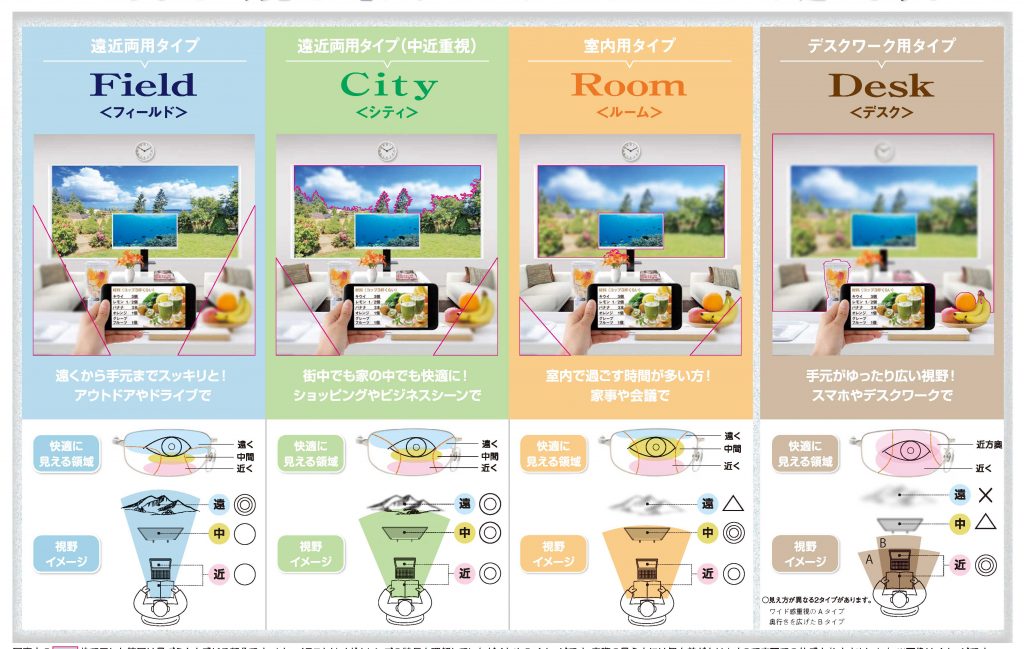044-722-4262
3-600 Kosugi-cho, Nakahara-ku, Kawasaki-shi, Kanagawa
Kosugi 3rd Avenue 1F
Business hours: 10:00-19:00
New & Restocked Frames
2020.06.08
How to Choose Reading Glasses for Working at Home
In fact, the concept of difficult power is also influenced by reading glasses on the market, such as +1.00 +2.00 +3.00,
Many of you may be familiar with the idea of power when it comes to reading glasses.
However, the power of those reading glasses is the power of "zero" in the distance = that is, if you have no nearsightedness, farsightedness, or astigmatism,
When you reach the appropriate age, reading glasses with this degree of power will allow you to see what is at hand.

So what about people with nearsightedness, farsightedness, and astigmatism? It becomes.
Of course, it would be best if we could measure and make it exclusively for you, the reader.
A person who said that he has been working at home more due to the Corona disaster complained that his hand and computer vision was not good enough with conventional glasses.
The number of people who are getting new glasses is increasing very rapidly. That is true. The distance that was not so important before,
One day I suddenly had to watch for hours in the same position.
Now, the main question is how to choose comfortable reading glasses,
First, I went to an eyeglass shop.before going, ,The distance to the computer or tablet you are using at home or at work.
Please measure as accurately as possible.The following is a list of the most common problems with the<This is very important.
If a professional optician says, "I need you to make sure that I can see a hundred centimeters.
They make reading glasses that are precisely focused at that distance.
Generally, I would adjust it to about 35 to 40 centimeters, but that's the distance between most computers.
It will be blurry.
So does that mean that the distance to read a phone or book is a blur when adjusted to a computer?
Not necessarily all of them, but more of them do.
However, of course, there are already lenses on the market that can improve on this situation, thanks to the results of constant research into lens design.


Here's where it gets important.depthIt is.
From left to right in the figure above: Bifocal lens, Bifocal lens (focusing on near), Intermediate-distance lens, Near-distance lens
(These days, they are sometimes called "indoor lenses" or "computer lenses" to make it easier for customers to understand. (These days, we also call them indoor lenses or computer lenses to make it easier for customers to understand.)
Here, I would like to recommendIntermediate-distance and near-bifocal lensesIt is.
Think of these as lenses that add depth to the reading glasses element.
With these lenses, I can see my hand, my computer, and even the TV.
It makes for very user-friendly spectacles.
However, there are actually some disadvantages to choosing this option.
Because normal reading glasses basically focus on one place,It looks very clear and crisp.
If these are used with additional depth, such as intermediate-distance or near-distance lenses, they may lack a little more clarity than ordinary reading glasses.
Therefore,Some people prefer just reading glasses for comfortable computer viewing, while others think that reading glasses are just fine,
Some people find functional lenses such as intermediate-distance or near-bifocal lenses comfortable.
The much talked about Hazukilupe isOver reading glasses."If you don't hang it up, it won't look as it should.
Please be careful. Hazuki-loupes are magnifying glasses, not reading glasses.
What's going on in this area.this way (direction close to the speaker or towards the speaker)for more information.
What each person finds convenient is different, and the choice will depend on the person's degree.
Even reading glasses can improve your vision and convenience if you are just a little bit particular about what you wear,
Please consult with us at the store.
Good opticians not only in our store but all over Japan will always let you compare how they see.
We urge you to decide carefully on the sensations you experience at the time of measurement.


